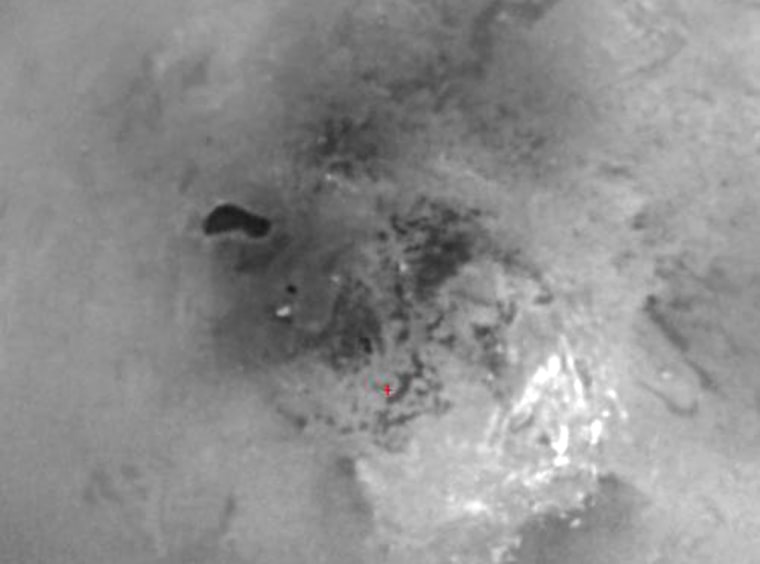You might have thought Saturn's moon Titan was a somewhat dead issue after the Cassini spacecraft did not find convincing evidence for methane seas that scientists had predicted would exist.
But the smoggy moon is back in the news today as a new Cassini image reveals a dark feature that scientists speculate might be a lake.
The feature is "remarkably lake-like," according to a NASA statement that noted the appearance of smooth, shore-like boundaries unlike any seen previously on Titan.
"I'd say this is definitely the best candidate we've seen so far for a liquid hydrocarbon lake on Titan," said Alfred McEwen, imaging team member and a professor at the University of Arizona.
The feature is 145 miles long by 45 miles wide (230 by 70 kilometers), or about the size of Lake Ontario on the U.S. Canadian border.
The possible lake is under the densest clouds on Titan. Scientists speculate methane rains might have fallen there recently.
"It's possible that some of the storms in this region are strong enough to make methane rain that reaches the surface," Cassini imaging team member Tony DelGenio of NASA's Goddard Institute for Space Studies in New York. "Given Titan's cold temperatures, it might take a long time for any liquid methane collecting on the surface to evaporate. So it might not be surprising for a methane-filled lake to persist for a long time."
It's also possible the feature was once a lake, but has since dried up, leaving behind dark deposits, said Elizabeth Turtle, Cassini imaging team associate at the University of Arizona. Or the region is simply a broad depression filled by dark, solid hydrocarbons falling from the atmosphere onto Titan's surface. In this case, the smooth outline might be the result of a process unrelated to rainfall, such as a sinkhole or a volcanic caldera.
A previous image of Titan revealed what scientist believe to be a volcano.
"It is already clear that whatever this lake-like feature turns out to be, it is only one of many puzzles that Titan will throw at us as we continue our reconnaissance of the surface over the next few years," said Carolyn Porco, imaging team leader at the Space Science Institute in Boulder, Colo.
Officials plan 39 more Titan flybys.
